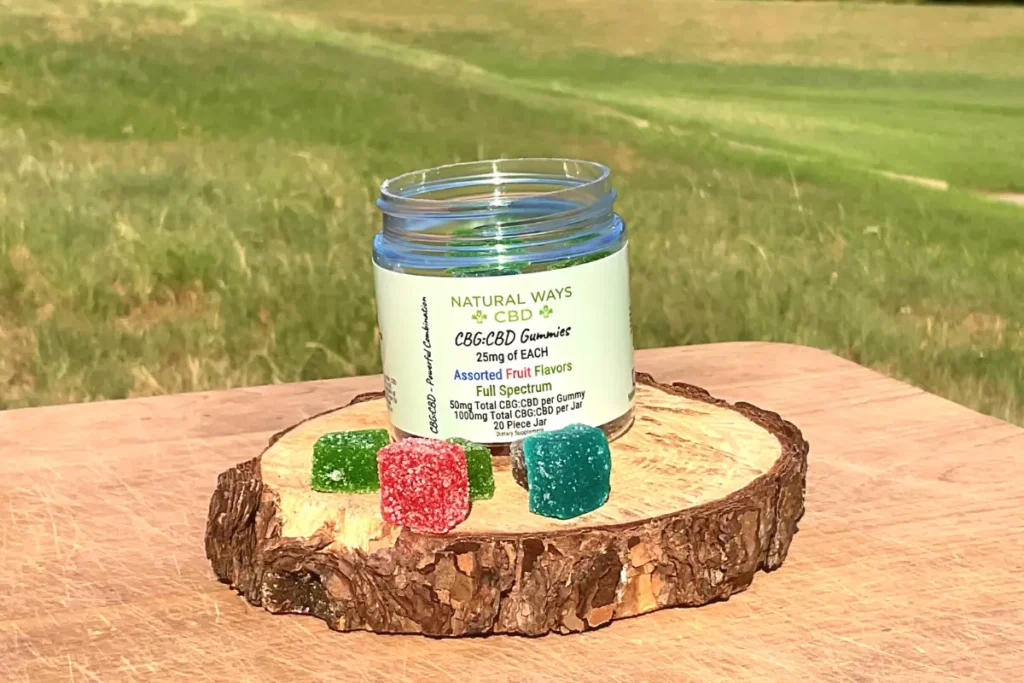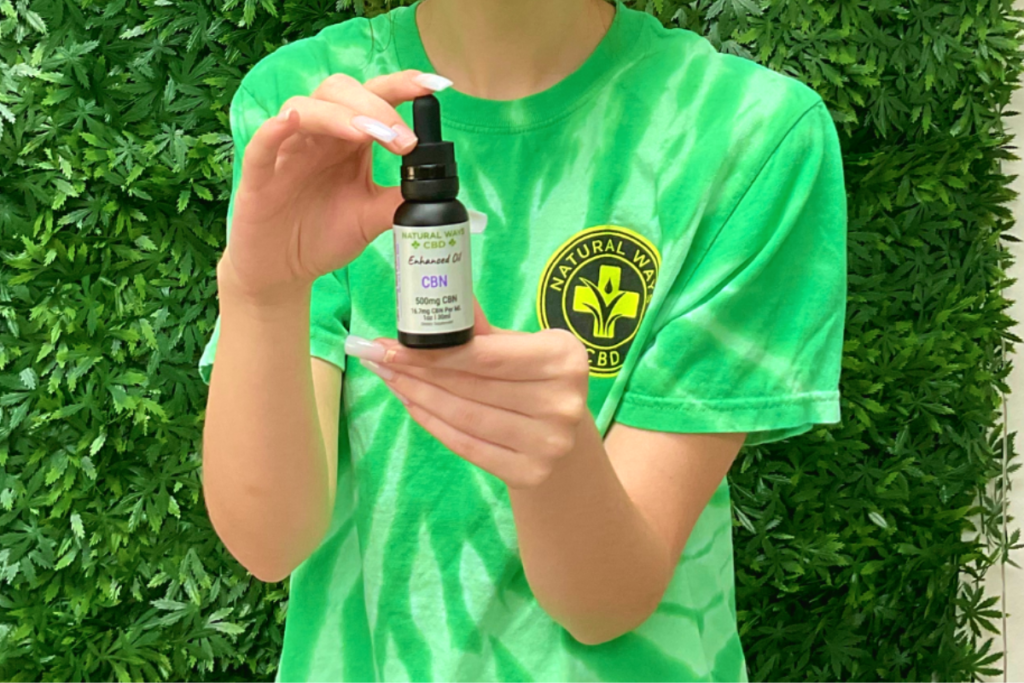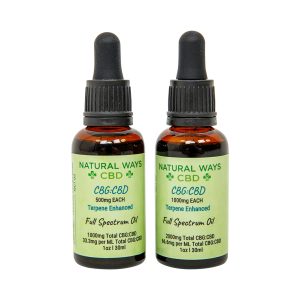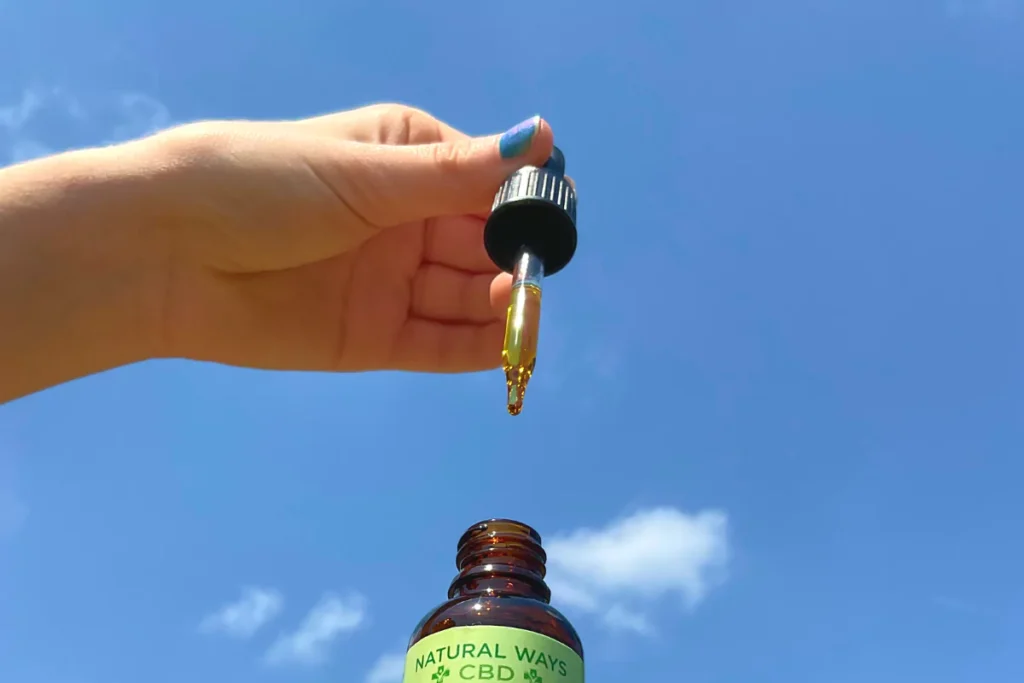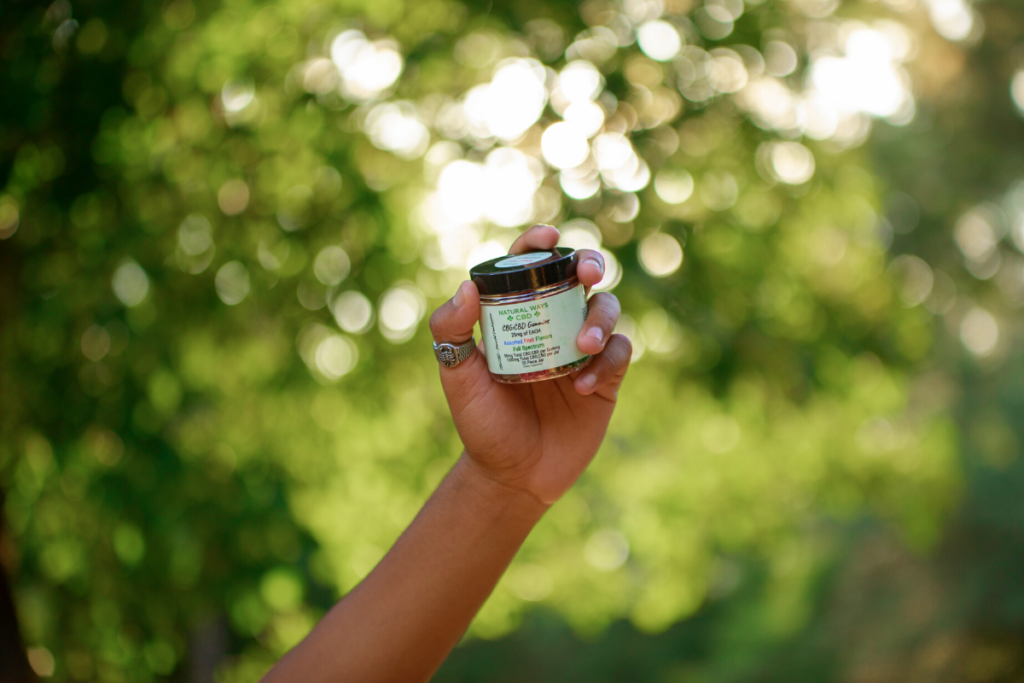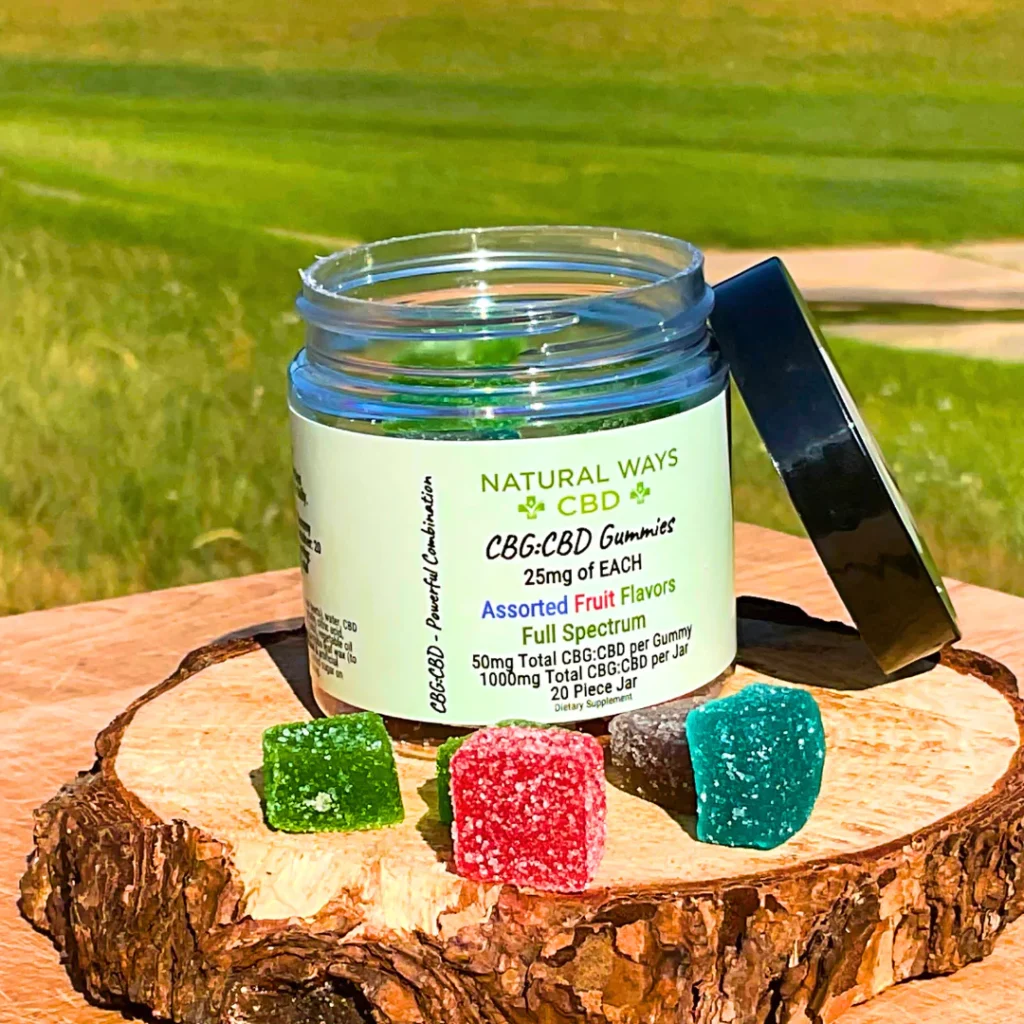Cannabigerol (CBG) is a naturally-occurring cannabinoid in the hemp plant. It’s known as the mother of all cannabinoids because CBGa, CBG’s acidic form, is the cannabinoid from which all others are derived.
But there’s so much more to CBG: this cannabinoid has become a popular natural supplement due to its wide range of research-backed potential therapeutic use cases, including for mental relaxation, physical relaxation, energy, focus, and more.
In this article, we’re going to explore what CBG is, the benefits it has to offer, how it works in the body, and more.
What is CBG?
Cannabigerol (CBG) is one of 100+ cannabinoids that naturally occur in the cannabis sativa plant (hemp is a federally legal variant of cannabis sativa that contains less than 0.3% THC by dry weight).
The acidic form of CBG, cannabigerol (CBGa), is the cannabinoid in hemp from which all others are derived, which has earned CBG the title “the mother of all cannabinoids.”
CBGa is present in high amounts in young hemp plants; as the plant grows, this CBGa converts intoTHCa, CBDa, and CBG (THCa and CBDa are then converted into THC and CBD).
Compared to CBD and THC, CBG isn’t especially abundant in hemp. But research suggests that, like these other, more well-known cannabinoids, CBG has a laundry list of potential therapeutic use cases.
And unlike THC, CBG isn’t psychoactive and won’t create a head high. This has made it especially popular among people who need strong physical relaxation but don’t want the head experience that comes with THC.
Benefits of CBG: What Is CBG Good For?
Research suggests CBG has a variety of potential therapeutic benefits and uses:
- Inflammation & pain: Research suggests CBG may have anti-inflammatory and analgesic (pain-reducing) properties. Anecdotally, many people use CBG for pain. A 2021 research review found that a combination of CBD and CBG may have inflammation-reducing effects [1].
- Weight loss: Research suggests CBG may interact with bodily systems in a way that reduces appetite and promotes weight loss. A 2021 study found that CBG may reduce appetite and induce weight loss by blocking the CB1 receptors in the endocannabinoid system [2].
- Skin health: Research suggests CBG may promote healthy skin. A 2022 study looked at the topical effects of CBG on skin irritation in 20 people. The researchers found that CBG caused improvements in the amount of transepidermal water loss and appearance of redness, both of which occurred less with CBG compared to a placebo [3].
- Anxiety: Recent research suggests CBG may promote mental relaxation and potentially offer support for those with anxiety. A 2024 study found that people who took a 20mg dose of CBG showed fewer signs of anxiety than people who took a placebo [4].
- Stomach & GI health: Research suggests CBG may positively influence stomach and gastrointestinal health by interacting with the CB1 receptors. A 2016 study found that the activation of both CB1 and CB2 receptors in the endocannabinoid system has beneficial effects on inflammation and pain in the stomach and intestines. [5].
- Energy & focus: CBG’s uplifting, clarifying effect profile makes it useful for boosting focus and energy. In a 2021 survey, 70.8% of respondents with ADHD saw an improvement in their condition after using products containing a mix of CBG and CBD [6].
- Neurological health: Research suggests CBG may support neurological health. CBG has been studied for use with Parkinson’s disease and Huntington’s disease, two conditions that erode the function of the nervous system and brain. Research suggests CBG may slow the progression of these diseases [7,8].
- Appetite: Research suggests CBG may have appetite-stimulating properties. A 2016 study concluded that CBG may have therapeutic potential for conditions involving malnutrition due to its appetite-stimulating properties [9].
- Eye health: Research suggests CBG may have supportive effects on the health of the eyes. One study found that CBG has vasodilating properties, meaning it may promote ocular blood flow, which keeps the eyes healthy and has a role in minimizing damage to the optic nerve [10].
- Nausea: Research suggests CBG may have anti-emetic (anti-nausea) properties. A 2011 study done on rats found that CBG, by itself, suppressed acute nausea. However, the research also found that CBG may nullify the beneficial effects of CBD on nausea, which means these cannabinoids are most beneficial for nausea if used separately [11].
It’s important to mention that while the scientific literature so far indicates CBG has wide-ranging therapeutic potential, it’s not a proven treatment for any condition yet.
Because of this, CBG should be used as a supplement to support overall good states of health, rather than as a replacement for traditional treatments.
How CBG Works in the Body
CBG works by interacting with your endocannabinoid system (ECS), a receptor system in your body that regulates your vital functions, including your sleep-wake cycle, emotional processing, mood, learning, memory, and more.
The main function of the ECS is to keep your mind and body in a state of mental and physical homeostasis, or balance.
There are two main types of receptors in the ECS:
- CB1 receptors are primarily found in the central nervous system and are responsible for regulating how cannabinoids affect the brain.
- CB2 receptors are found in tissues throughout the body. They’re primarily responsible for regulating how cannabinoids affect the body.
CBG interacts with both the CB1 and CB2 receptors, which enables it to create both mental and physical benefits.
Research says that CB2 receptors are “therapeutic targets for the treatment of anxiety and depression” [12].
A 2023 study found that CBG can desensitize the TRPV1 receptors in your central nervous system, thereby blocking the transmission of pain signals [13].
More research is needed before we fully understand CBG’s mechanism of action in the body – how it creates the benefits it does.
However, the studies so far show that CBG works in the body through a number of mechanisms, which helps to explain its wide-ranging benefits.
Side Effects of CBG
CBG’s effects are, by-and-large, very beneficial. However, like most other cannabinoids and similar substances, it has the potential to create adverse effects.
Possible side effects of CBG include:
- Dry mouth
- Sleepiness
- Increased appetite
- Dry eyes
- Digestive upset (nausea, diarrhea)
- Dizziness
- Headache
Additionally, CBG may interact with some prescription medications, particularly heart medications. If you’re taking prescriptions
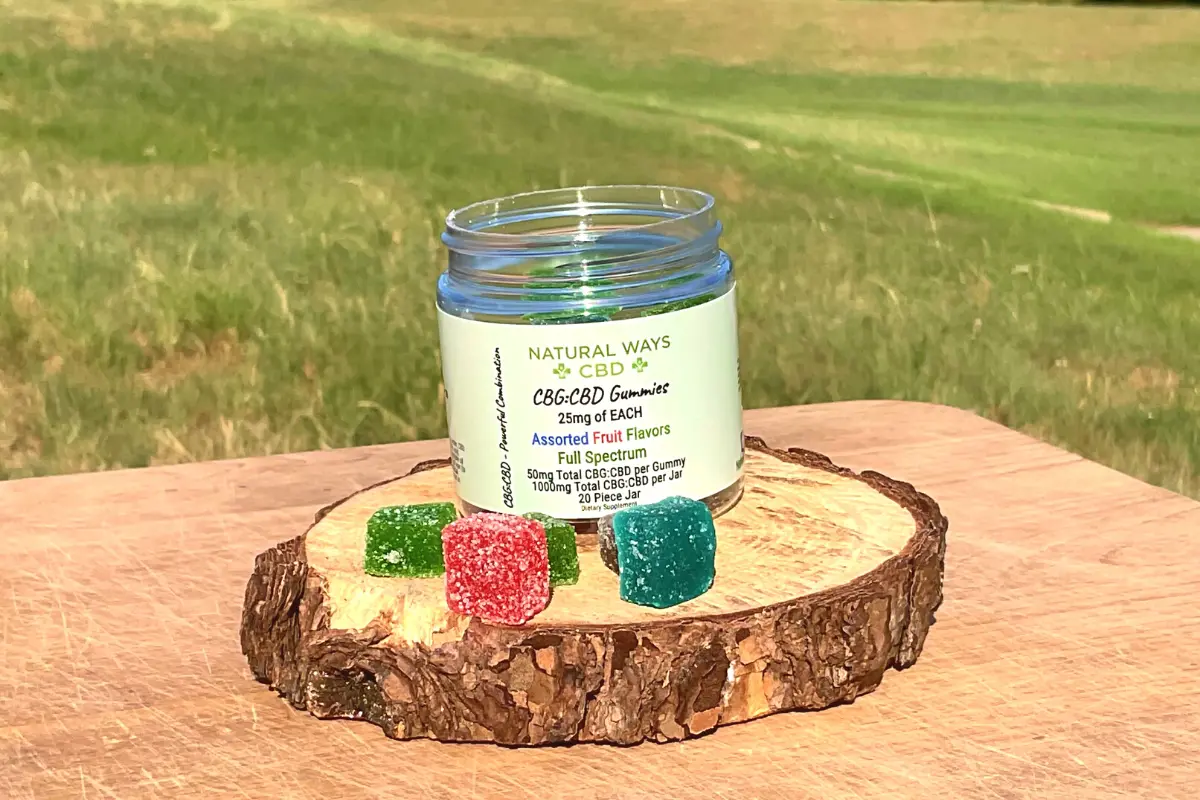
Does CBG Get You High?
No, CBG will not get you high. CBG is a non-psychoactive cannabinoid that will not create a head experience like THC does.
However, CBG will create an uplifting, energizing mental effect that’s similar to caffeinated coffee.
The mental effects of CBG are more noticeable than those of CBD, but it’s not inebriating by any means. In fact, CBG tends to reduce the inebriating effects of THC if these two cannabinoids are taken together.
How CBG Works With Other Cannabinoids
CBG has many benefits by itself, but it’s even more beneficial when combined with other hemp-derived cannabinoids.
CBG and CBD together
Cannabidiol (CBD) is a naturally-occurring cannabinoid in the hemp plant.
CBD creates a very mild mental effect. However, most of its impact comes in its ability to support overall mental and physical balance, rather than creating overtly pleasurable sensations.
When you take CBD alongside CBG, both cannabinoids balance each other’s mental effects while amplifying each other’s benefits. CBD helps to slightly temper CBG’s energizing effects, while the addition of CBG makes for a stronger experience than CBD could create by itself.
Both cannabinoids contribute to each other’s “intangible” benefits (e.g. promoting balance in the body).
Some of the most popular use cases for CBG and CBD together are:
- Anxiety & stress
- Focus
- Physical discomfort
CBG and THC together
Tetrahydrocannabinol (THC) is a naturally-occurring cannabinoid in the hemp plant.
THC is well-known for its psychoactive effects. But while its high potency can be therapeutically beneficial, THC sometimes has a tendency to create anxiety, paranoia, and cognitive impairment as side effects.
THC has been researched for sleep, pain, nausea, and more.
Taking CBG in combination with THC may reduce THC’s inebriating properties while enhancing its therapeutic properties for the body and mind. CBG:THC is especially popular for people who deal with anxiety or physical discomfort during the daytime.
Some of the most popular use cases for CBG and THC together are:
- Anxiety & stress
- Focus
- Physical discomfort
CBG and CBN together
Cannabinol (CBN) is a naturally-occurring cannabinoid in the hemp plant.
CBN is known for its relaxing, sedative, and slightly psychoactive effects, which has led to it becoming a popular natural sleep aid. CBN has been researched for sleep, anxiety, pain, and more.
Many people find CBN beneficial for sleep, but its sedative nature means it’s not as good of an option during the daytime. Combining it with CBG helps to balance these effects, allowing each cannabinoid to promote physical and mental relaxation without being overly tiring or energizing.
Some of the most popular use cases for CBG and CBN together are:
- Anxiety & stress
- Physical discomfort
- Sleep

Conclusion: The Mother of All Cannabinoids
CBG isn’t as widely used for therapeutic or recreational purposes as either CBD or THC are. But we think this will change as more research is done and more people discover the benefits this cannabinoid has to offer.
If you’re ready to try CBG, Natural Ways CBD is the perfect place to start. Our CBG products are made with American-grown hemp and are 3rd-party lab tested to verify safety and potency. Check out our collection of CBG oils, gummies, and more.
What is CBG: Frequently Asked Questions
Here are some questions our customers frequently ask us about CBG.
What will CBG do for you?
CBG creates energizing, uplifting mental effects and relaxing physical effects without being psychoactive. Potential therapeutic uses of CBG include physical discomfort, anxiety, and stress.
Is CBG stronger than CBD?
In terms of pure mental effects, CBG is stronger than CBD. While CBD’s mental effects are very subtle, CBG creates noticeably uplifting, energizing sensations.
What is the main use of CBG?
While CBG has a variety of therapeutic use cases, a 2022 research survey found that the most common use of CBG is for anxiety.
What is the purpose of CBG?
In the hemp plant, CBGa (the acidic form of CBG) serves as the precursor to every cannabinoid, including CBD and THC. As a therapeutic supplement, CBG may promote physical relaxation and mental energy and focus.
Sources
[1] Robaina Cabrera, Carmen Lorena & Keir-Rudman, Sandra & Horniman, Nick & Clarkson, Nick & Page, Clive. (2021). The anti-inflammatory effects of cannabidiol and cannabigerol alone, and in combination. Pulmonary Pharmacology & Therapeutics. 69. 102047. 10.1016/j.pupt.2021.102047.
[2] Kogan, Natalya M et al. “Novel CBG Derivatives Can Reduce Inflammation, Pain and Obesity.” Molecules (Basel, Switzerland) vol. 26,18 5601. 15 Sep. 2021, doi:10.3390/molecules26185601
[3] Perez, Eduardo et al. “In Vitro and Clinical Evaluation of Cannabigerol (CBG) Produced via Yeast Biosynthesis: A Cannabinoid with a Broad Range of Anti-Inflammatory and Skin Health-Boosting Properties.” Molecules (Basel, Switzerland) vol. 27,2 491. 13 Jan. 2022, doi:10.3390/molecules27020491
[4] Cuttler, C., Stueber, A., Cooper, Z. D., & Russo, E. (2024). Acute effects of cannabigerol on anxiety, stress, and mood: a double-blind, placebo-controlled, crossover, field trial. Scientific reports, 14(1), 16163. https://doi.org/10.1038/s41598-024-66879-0
[5] Gyires, Klára, and Zoltán S Zádori. “Role of Cannabinoids in Gastrointestinal Mucosal Defense and Inflammation.” Current neuropharmacology vol. 14,8 (2016): 935-951. doi:10.2174/1570159×14666160303110150
[6] Kaufmann, R. Nano-processed CBG/CBD effect on pain, adult attention deficit hyperactive disorder, irritable bowel syndrome and chronic fatigue syndrome. Int J Complement Alt Med. 2021;14(6):235–240. doi: 10.15406/ijcam.2021.14.00567
[7] More, Sandeep Vasant, and Dong-Kug Choi. “Promising cannabinoid-based therapies for Parkinson’s disease: motor symptoms to neuroprotection.” Molecular neurodegeneration vol. 10 17. 8 Apr. 2015, doi:10.1186/s13024-015-0012-0
[8] Valdeolivas, Sara et al. “Neuroprotective properties of cannabigerol in Huntington’s disease: studies in R6/2 mice and 3-nitropropionate-lesioned mice.” Neurotherapeutics : the journal of the American Society for Experimental NeuroTherapeutics vol. 12,1 (2015): 185-99. doi:10.1007/s13311-014-0304-z
[9] Brierley, Daniel I et al. “Cannabigerol is a novel, well-tolerated appetite stimulant in pre-satiated rats.” Psychopharmacology vol. 233,19-20 (2016): 3603-13. doi:10.1007/s00213-016-4397-4
[10] Nadolska, Krystyna, and Roman Goś. “Mozliwości zastosowania kannabinoidów w leczeniu jaskry” [Possibilities of applying cannabinoids’ in the treatment of glaucoma]. Klinika oczna vol. 110,7-9 (2008): 314-7.
[11] Rock, Erin M et al. “Interaction between non-psychotropic cannabinoids in marihuana: effect of cannabigerol (CBG) on the anti-nausea or anti-emetic effects of cannabidiol (CBD) in rats and shrews.” Psychopharmacology vol. 215,3 (2011): 505-12. doi:10.1007/s00213-010-2157-4
[12] Bahi, A., Al Mansouri, S., Al Memari, E., Al Ameri, M., Nurulain, S. M., & Ojha, S. (2014). β-Caryophyllene, a CB2 receptor agonist produces multiple behavioral changes relevant to anxiety and depression in mice. Physiology & behavior, 135, 119–124. https://doi.org/10.1016/j.physbeh.2014.06.003
[13] Wen, Yuting et al. “The antinociceptive activity and mechanism of action of cannabigerol.” Biomedicine & pharmacotherapy = Biomedecine & pharmacotherapie vol. 158 (2023): 114163. doi:10.1016/j.biopha.2022.114163

